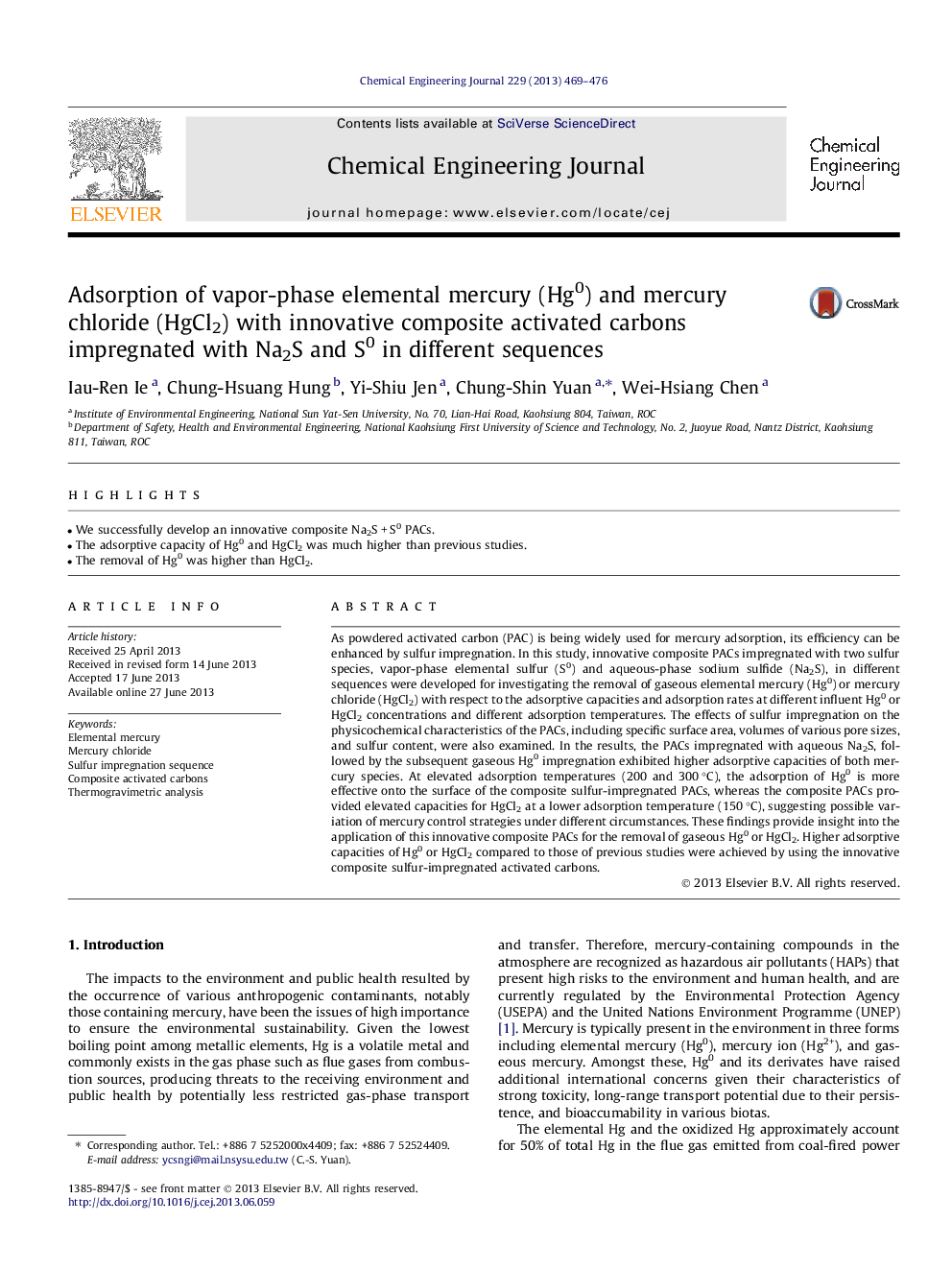| Article ID | Journal | Published Year | Pages | File Type |
|---|---|---|---|---|
| 6587088 | Chemical Engineering Journal | 2013 | 8 Pages |
Abstract
As powdered activated carbon (PAC) is being widely used for mercury adsorption, its efficiency can be enhanced by sulfur impregnation. In this study, innovative composite PACs impregnated with two sulfur species, vapor-phase elemental sulfur (S0) and aqueous-phase sodium sulfide (Na2S), in different sequences were developed for investigating the removal of gaseous elemental mercury (Hg0) or mercury chloride (HgCl2) with respect to the adsorptive capacities and adsorption rates at different influent Hg0 or HgCl2 concentrations and different adsorption temperatures. The effects of sulfur impregnation on the physicochemical characteristics of the PACs, including specific surface area, volumes of various pore sizes, and sulfur content, were also examined. In the results, the PACs impregnated with aqueous Na2S, followed by the subsequent gaseous Hg0 impregnation exhibited higher adsorptive capacities of both mercury species. At elevated adsorption temperatures (200 and 300 °C), the adsorption of Hg0 is more effective onto the surface of the composite sulfur-impregnated PACs, whereas the composite PACs provided elevated capacities for HgCl2 at a lower adsorption temperature (150 °C), suggesting possible variation of mercury control strategies under different circumstances. These findings provide insight into the application of this innovative composite PACs for the removal of gaseous Hg0 or HgCl2. Higher adsorptive capacities of Hg0 or HgCl2 compared to those of previous studies were achieved by using the innovative composite sulfur-impregnated activated carbons.
Related Topics
Physical Sciences and Engineering
Chemical Engineering
Chemical Engineering (General)
Authors
Iau-Ren Ie, Chung-Hsuang Hung, Yi-Shiu Jen, Chung-Shin Yuan, Wei-Hsiang Chen,
